Who will thrive in 2018 and who will flounder? Retail experts share their tips for the year ahead.

Bryan Roberts, global insights director, TCC Global
Winner: The Co-op
Although its headline festive trading number was undoubtedly flattered by opening-hours restrictions for larger grocers, as well as Palmer & Harvey-related supply issues for other neighbourhood retailers, there can be little doubt that this seasonal triumph has capped off an excellent year for the Co-op.
2018 should be equally impressive. Its store refresh programme continues, as it opens 100 stores to serve new communities (Harrow next, please, if anyone from the property team reads this), and, as it starts supplying Nisa and Costcutter, the growth momentum behind the Co-op is only going to get stronger.
Throw in factors like superb community engagement, solid marketing and a membership scheme that generates meaningful loyalty, and the Co-op will have another blinder this year.
Loser: WHSmith
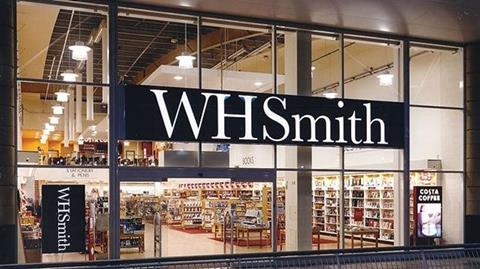
This is not as much of an obvious choice as it might first appear. Although there is much fun poked at WHSmith on social media, it has been among the most successful UK retail businesses in terms of share price and financial performance.
However, I fear we might be reaching a tipping point where the constant cost-cutting might frustrate shoppers and WHSmith might have to try to remember how to drive high street sales again.
The glimmers of hope (Holborn, Euston, Reading) are more than outweighed by the moribund state of other stores around the country, and I’m not sure that levying hefty captive audience price premiums on shoppers in stations and airports is an enduring business strategy.
Perhaps WHSmith should start trying to please the public occasionally, as well as the stock market.

George MacDonald, executive editor, Retail Week
Winner: Asos
The young fashion etailer has not put a foot wrong in recent years and there’s no reason to fear that should change.
Technological prowess, a clear view of its global customer and a company culture that fosters innovation remain among Asos’s advantages that give it the same edge in 2018 that it had as a start-up at the turn of the millennium.
I expect Asos to have had a strong Christmas – it updates at the end of this month – and to continue motoring throughout the year.
Loser: Boots
It’s one of the most venerable names on the high street, but is Boots losing its touch?
The retailer’s controversial stance over its pricing of the morning after pill continues to make headlines almost six months after the row originally broke, and Tesco, rather than Boots, made the running in battling for women shoppers over the ‘tampon tax’.
Many retailers, including new disruptors such as Deciem and established players such as department stores, are upping the game in beauty, and there’s talk that Sephora is mulling a return to the UK.
Boots may need some retail medicine to stay in the best of health.

Nick Bubb, independent analyst
Winner: B&M
Rather than go for a recovery stock in 2018, it seems best to play safe and go with momentum, and that path leads inexorably to the fast-growing discount chain B&M Retail, which rose by 52% in 2017 and is now capitalised at as much as £4.2bn.
It has crept up the rankings by stealth, but with a fair wind it should get into the FTSE 100 index this year and should also benefit from the problems of Poundland. A fair target for B&M would be to overtake M&S in market cap terms in 2018.
Loser: House of Fraser
With trading weak, discounting rife and fears mounting about the commitment of its Chinese owner, it was no surprise to see the credit rating agency Moody’s warn last month that House of Fraser was a very high credit risk and the structural problems of the business seem likely to overwhelm the turnaround efforts of the inexperienced new management team.

Jonathan De Mello, head of retail consultancy, Harper Dennis Hobbs
Winner: JD Sports
It has gone from strength to strength since the failure of competitor JJB Sports in 2012, largely due to the fact that it has a very distinct positioning versus the only other major player in sports fashion in the UK, Sports Direct.
Its recent focus on more upmarket trainers and athleisure has paid off, with profit up 33% and sales up 41% in its most recent set of results; phenomenal performance in the current climate.
JD has also been expanding internationally with good success, with a mix of both acquisitions (Sprinter in Spain and Chausport in France) and organic growth.
Loser: New Look
The significant downgrade of New Look by Moody’s is justified in my opinion, with a colossal £1.1bn debt that still needs to be serviced, and a substantial store portfolio in the UK – and the cost associated with running such a portfolio.
Primark’s rise and continued pre-eminence is chiefly to blame for New Look’s woes, and in a highly competitive sector I do not see how they can meaningfully recover; even in the medium to long term.

Patrick O’Brien, UK retail research director, GlobalData
Winner: B&M
B&M has been on a great run and we see good reasons why it should continue: its focus on cash strapped customers, of which there will be more in 2018 due to the prevailing economic winds; its proven ability to pull off the tricky juggling act of improving like-for-likes at the same time as aggressively expanding stores, and the acquisition of Heron Foods, which pushes it into the growing convenience grocery sector.
If it can make good on its promise to open 50 stores a year, especially if it can find cheap enough locations in the underrepresented areas of London and the Southeast, then it will soon become enough of a thorn in the side of the big four for one of them to consider acquiring it.
Loser: Homebase/Bunnings
Everything about Wesfarmers’ UK strategy to date has been puzzling: spending so much (£340m) on a struggling retailer, immediately clearing the board of any UK retail experience, reversing store closures, displaying total ambivalence to ecommerce and, not least, turning half-decent Homebase stores into bargain bin-littered dumps.
The newly branded Bunnings stores look fine, but its Australian management is acting very cautiously in making further capital investments, and the slower it takes to convert them, the worse the legacy Homebase stores become.
Nothing about the housing market gives the DIY market much encouragement, and winning market share looks more difficult than ever as competitors have improved their offers to counter the threat.
UK head Peter ‘PJ’ Davis is about to depart to Australia for a three-month break, the timing of which could hardly be worse, given that he returns after the key Easter period. You wouldn’t blame him if he declined to come back.

Philip Wiggenraad, head of research, Retail Week Prospect
Winner: Holland & Barrett
As one of the most profitable retailers in the UK, Holland & Barrett has long been a winner. It has not been standing still, though, as evidenced by the recent launch of its Healthbox subscription service, which gives personalised recommendations to shoppers, and the continuous fine-tuning of its range.
Ongoing moves to create a greater integration between online and its stores – and the expertise of its store staff – should provide a further boost over 2018.
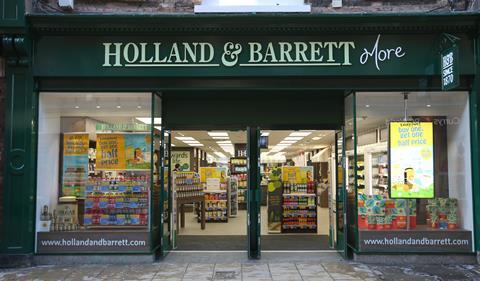
Loser: Maplin
Maplin’s performance has continued to deteriorate and the departure of boss Oliver Meakin is perhaps a telling sign.
Maplin’s treasure trove of electronics and gadgets gave it a unique position on the high street. However, increasingly, shoppers are turning online to cheaper rivals for these items – particularly in the age of speedy fulfilment services.
The recent focus on items for the connected home means the retailer is now also competing head-on with the likes of John Lewis and Currys, and it has moved away from its niche.

Richard Hyman, founder, Richard Talks Retail
Winner: Aldi
My winner for 2018 is hardly a newcomer. Indeed, with UK sales now passing £10bn it’s hard to ignore Aldi. And yet the major supermarkets continue to underestimate just how good a retailer it is.
It will never be matched, let alone beaten, on price. It understands exactly what its customers want and how they want it, building an operating model accordingly.
It never chases peripheral customers with space or SKU extensions. By the close of 2018, I expect its market share to have passed 7.5% as it progresses to, and beyond, 10%.
Loser: House of Fraser
Department stores are difficult beasts to run successfully at the best of times. They need constant investment and compelling reasons to attract customers. I do not believe HoF has either.
The business does not have a sufficiently clear and differentiated proposition. A sales per foot of circa £200 is nowhere near enough to generate the returns needed for a capital-intensive format like a department store.

Matt Truman, chief executive and co-founder, True
Winner: Made.com
Furniture retailer Made.com has innovated to develop an online platform, integrated with new technologies such as visual search engine Hullabalook, suited to consumer desire for a quick and convenient shopping experience, and a new way to shop online for furniture.
Made.com has opened a small handful of showrooms, providing a truly multichannel proposition and the capacity to grow further.
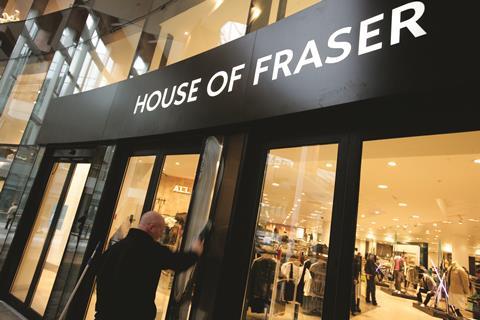
Loser: House of Fraser
Department stores, such as House of Fraser, will find they risk being caught in the middle, as do many high street fashion brands that appear to offer traditional fashion cycles and undifferentiated product at ever higher prices.
Looking forward four to five years, there appears to be limited free cashflow to truly invest, making competing with those that are investing incredibly difficult – if not impossible.

Jonathan Pritchard, analyst, Peel Hunt
Winner: B&M
I have no doubt that B&M will continue to prosper. We don’t think we’re headed for a recession, but nor is the consumer chipper, and trading down will continue. B&M is one of the few discounters that is adding space, and it is also improving the range and its store standards as well. A very solid call.
Loser: Debenhams
The tightening in consumer spending and FX pressure is tough enough to leave the more challenged retailers facing gross margin decline and cost growth, which they are unable to mitigate and trade out of. Debenhams is in this camp.
We believe the consumer proposition is simply not compelling enough and the plan to turn this around is not convincing at this stage. This could be a case of a solid management team being defeated by a flawed underlying business.





















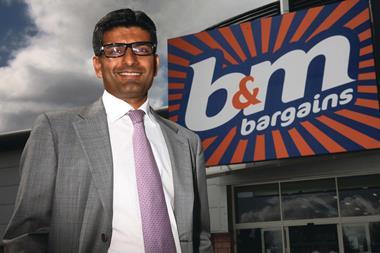
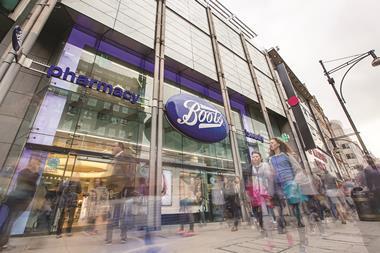




No comments yet